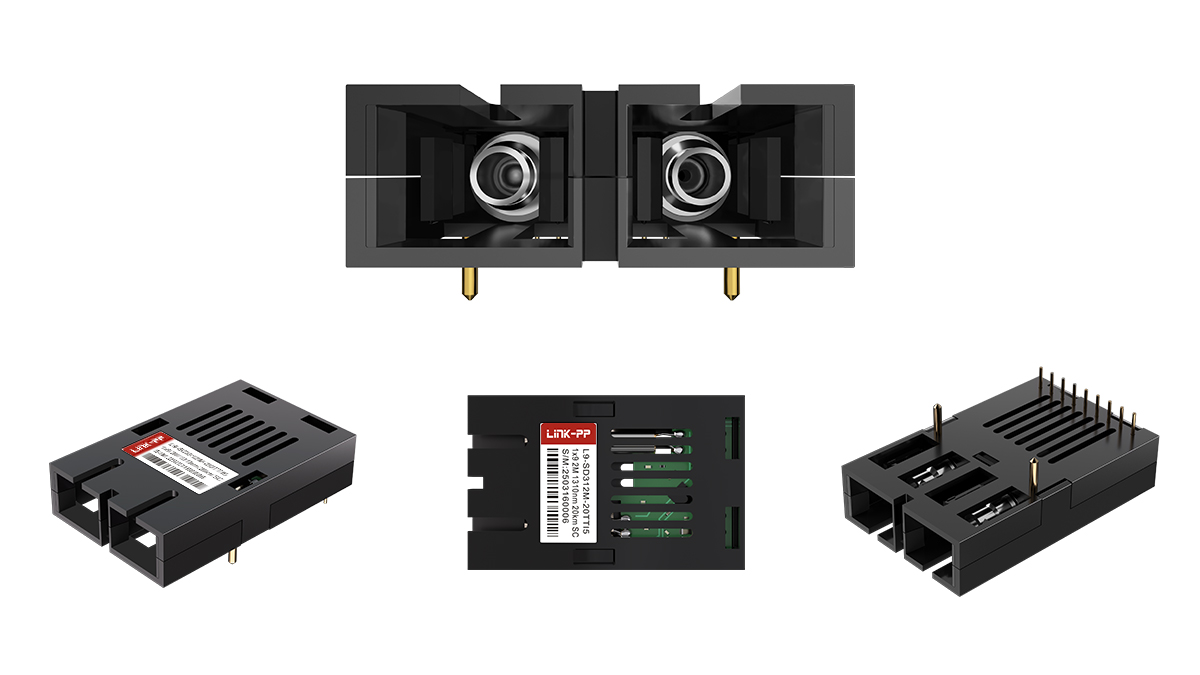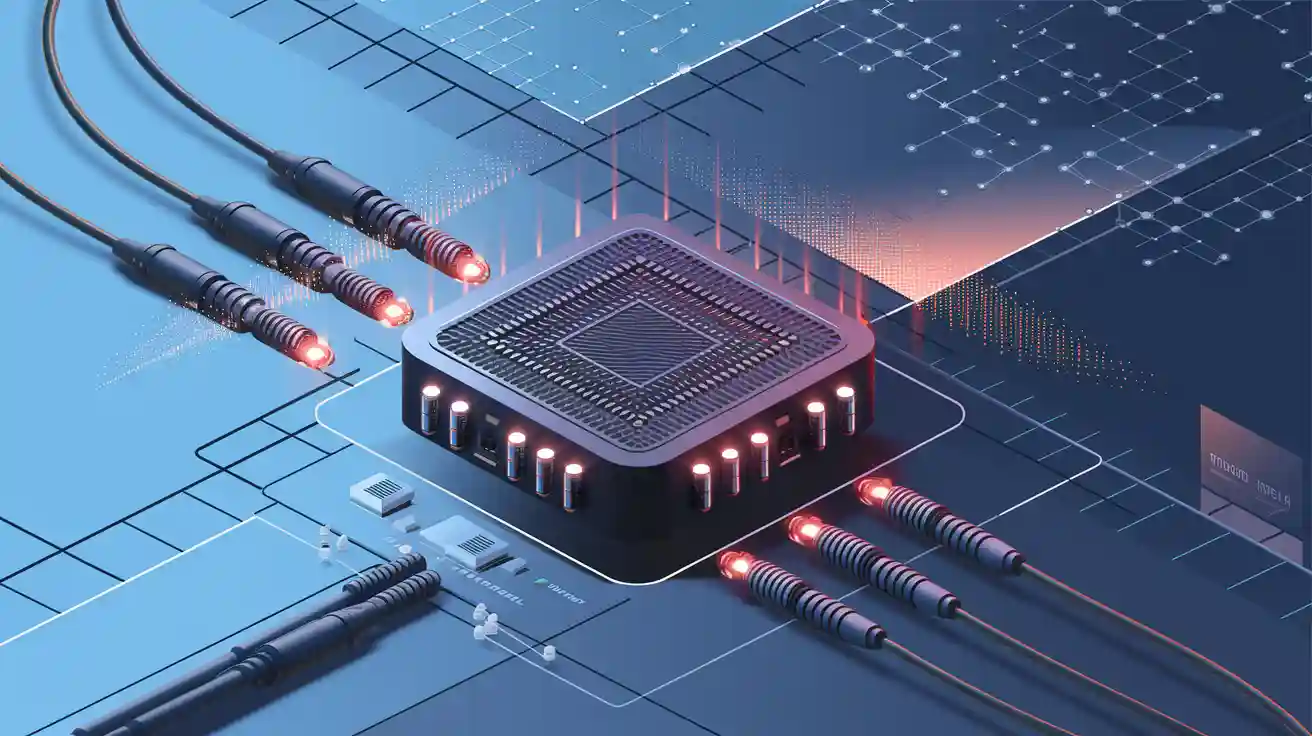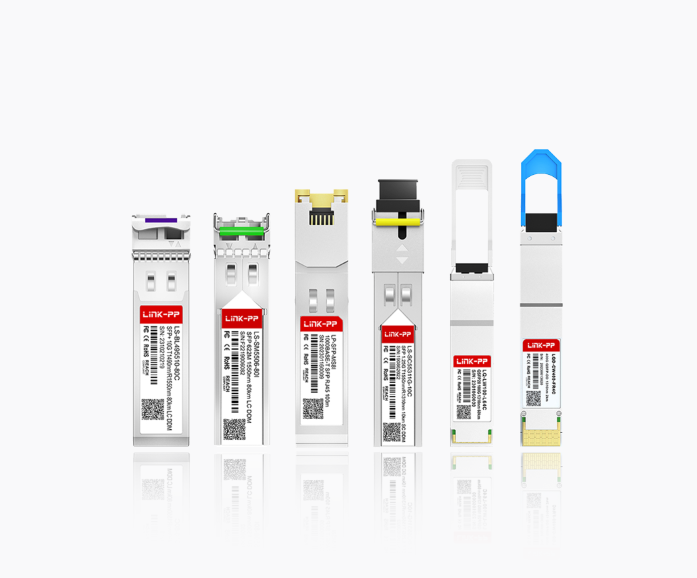In the ever-evolving world of fiber optic communications, 1x9 optical transceivers remain a foundational component for legacy systems and specific industrial applications. Whether you're a network engineer, a procurement specialist, or simply curious about fiber optics, this guide will explain what a 1x9 optical transceiver is, how it works, and why brands like LINK-PP continue to support this technology.

Understanding the 1x9 Optical Transceiver
A 1x9 optical transceiver is a compact, standardized fiber optic module designed to transmit and receive data over optical fibers. The name "1x9" refers to its pin configuration: 1 row of 9 electrical pins for connecting to networking equipment. These modules were widely adopted in early fiber optic systems due to their simplicity, reliability, and cost-effectiveness.
Unlike modern small-form-factor pluggable (SFP) transceivers, 1x9 modules are fixed (non-hot-swappable) and typically use SC connectors for fiber termination. They support a range of data rates, from 100Mbps to 2.5Gbps, and are commonly used in short-to-medium-distance applications.
Key Features of 1x9 Transceivers
Form Factor: Compact, fixed design with a 1-row, 9-pin interface.
Data Rates: Supports speeds from 100Mbps to 2.5Gbps.
Connector Type: SC, ST, FC, or pigtail. Commonly SC connector.
Wavelengths: Typically operates at 850nm (multimode) or 1310/1550nm (single-mode).
Transmission Distance: Up to 2 km (multi-mode), 40+ km (single mode)
Temperature Range: -40℃~85℃, Industrial Grade
Applications: Ethernet, Fiber Channel, and telecom infrastructure.
Applications of 1x9 Optical Transceivers
While newer form factors like SFP and QSFP dominate modern networks, 1x9 transceivers are still widely used in:
Legacy Network Equipment: Many older switches, routers, and media converters rely on 1x9 modules.
Industrial Automation: Their rugged design suits factory floors and outdoor installations.
Telecom Backhaul: Cost-effective for low-bandwidth, long-distance links.
Fiber Channel Storage Networks: Used in SANs (Storage Area Networks) for data center connectivity.
For organizations maintaining legacy systems, LINK-PP 1x9 transceivers offer backward compatibility without compromising reliability.
Advantages of 1x9 Modules Over Modern Alternatives
1. Simplified Design
The fixed, non-pluggable design reduces points of failure, making 1x9 transceivers exceptionally reliable for static installations.
2. Lower Latency
With fewer signal conversion stages, these modules deliver low-latency performance—critical for real-time industrial protocols.
3. Cost Efficiency
1x9 optical transceivers are often 50-70% cheaper than equivalent SFP modules, ideal for organizations prioritizing budget.
How 1x9 Compares to Other Optical Transceiver Types
Transceiver Type | Form Factor | Max Data Rate | Hot-Swappable? | Typical Use Case |
|---|---|---|---|---|
1x9 | Fixed | 2.5 Gbps | No | Legacy networks, SC connectors |
SFP | Pluggable | 10 Gbps | Yes | Enterprise switches, routers |
SFP+ | Pluggable | 16 Gbps | Yes | High-speed data centers |
QSFP28 | Pluggable | 100 Gbps | Yes | Cloud infrastructure |
Why Choose LINK-PP's 1x9 Transceivers?

LINK-PP has built a reputation for delivering high-quality, compatible optical transceivers tailored for niche applications. Here’s why engineers trust their 1x9 modules:
Compliance: LINK-PP transceivers meet IEEE, ITU, and MSA standards for seamless integration.
Extended Temperature Range: Operates reliably in -40°C to 85°C environments.
Multi-Vendor Compatibility: Works seamlessly with Cisco, Juniper, and other legacy systems.
For businesses seeking reliable 1x9 single-mode transceivers or multimode fiber solutions, LINK-PP offers tailored options at competitive prices.
How to Select the Right 1x9 Transceiver
When sourcing a 1x9 modules, consider these factors:
Fiber Type: Match the transceiver (multimode/single-mode) to your fiber cable.
Distance Requirements: Single-mode variants support longer distances (up to 120 km).
Wavelength: Ensure compatibility with existing network infrastructure.
Vendor Reputation: Opt for certified suppliers like LINK-PP to avoid compatibility issues.
Conclusion
The 1x9 optical transceiver may be a legacy technology, but its simplicity, reliability, and affordability ensure it remains a viable choice for specific use cases. For organizations prioritizing cost-efficiency and reliability, LINK-PP optical transceivers provide a trusted solution. Whether upgrading aging infrastructure or deploying ruggedized networks, understanding the capabilities of 1x9 modules is key to making informed decisions.
FAQ
What makes 1x9 products unique compared to other optical transceivers?
1x9 products feature a fixed design with nine pins, ensuring stable performance and compatibility with legacy systems. Their cost-effectiveness and reliability make them ideal for large-scale deployments and environments requiring durable solutions.
What types of networks benefit most from 1x9 transceivers?
Telecommunications networks, data centers, and industrial systems benefit from 1x9 transceivers. Their adaptability to various fiber types and operating conditions ensures reliable performance across diverse applications.
What are the typical data rates supported by 1x9 transceivers?
1x9 transceivers support data rates ranging from 500 kbps to 1.25 Gbps. This flexibility allows you to choose a model that matches your network's speed requirements.
What wavelengths do 1x9 transceivers operate on?
1x9 transceivers typically operate on wavelengths like 850 nm for short-range communication and 1550 nm for long-distance transmission. These options ensure compatibility with different fiber optic systems.
What industries rely on 1x9 transceivers for specialized applications?
Industries like aerospace, military, and manufacturing rely on 1x9 transceivers for their rugged design and compatibility with legacy systems. These transceivers ensure reliable communication in demanding environments.
See Also
The Importance of Digital Monitoring in Optical Transceivers




